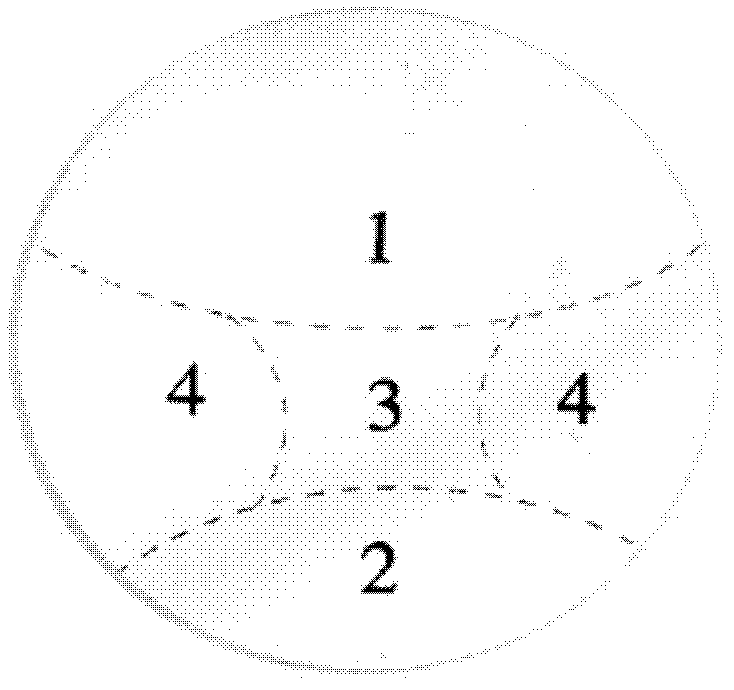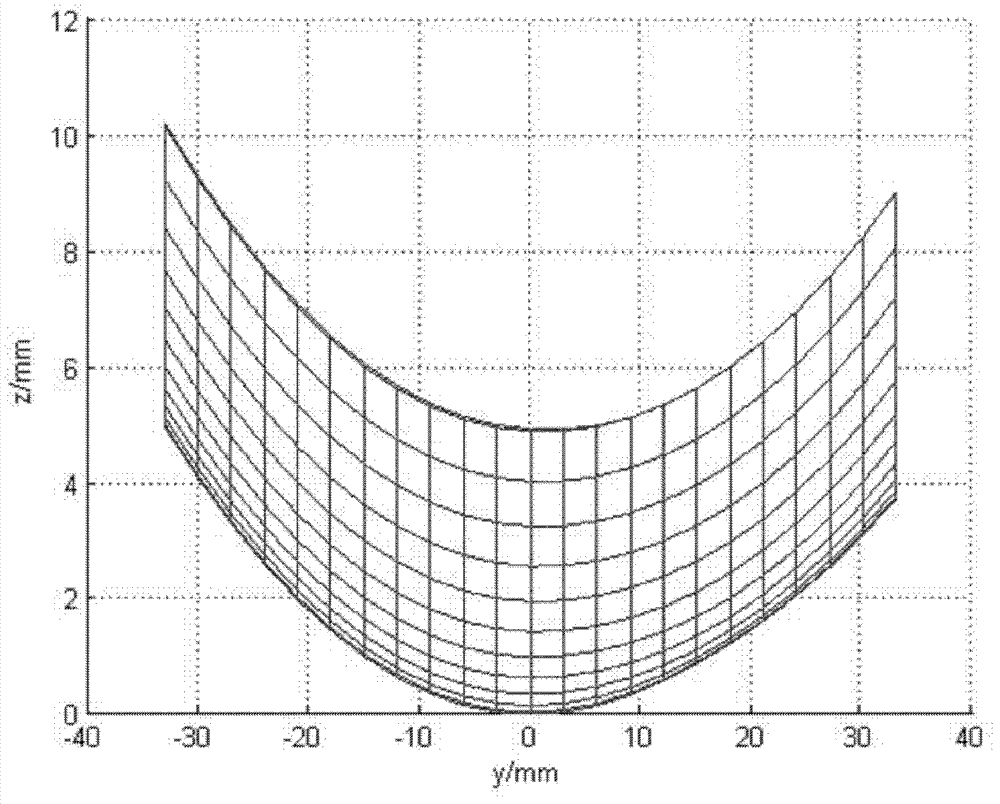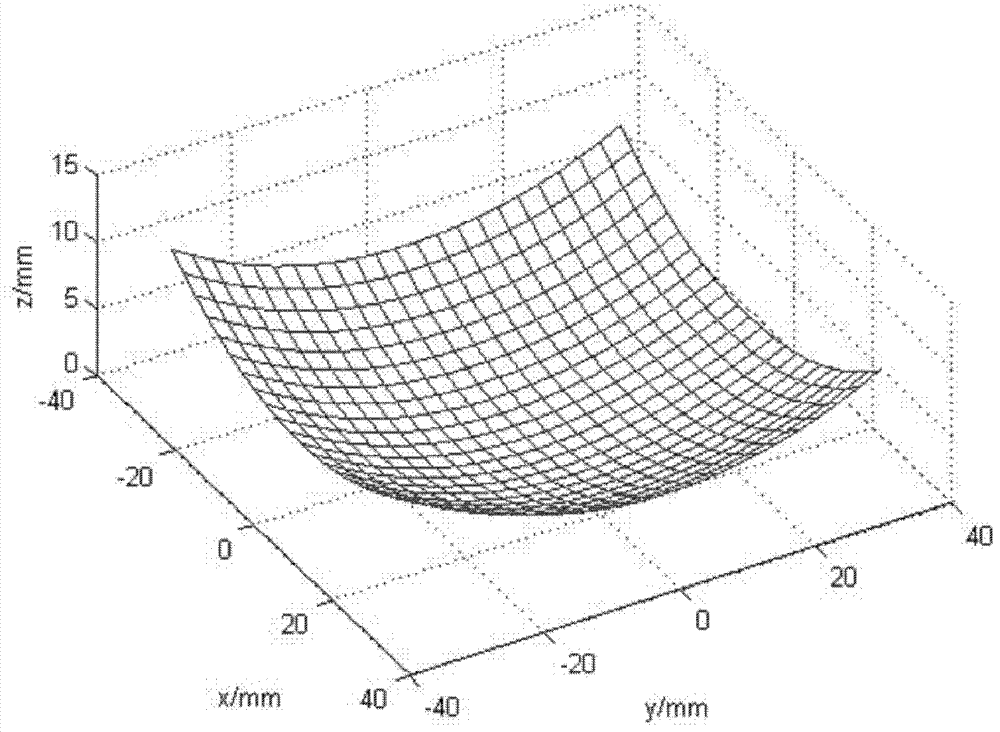Progressive addition lens with large visual areas and low astigmatism
A progressive multi-focal lens technology, applied in the field of progressive multi-focal lenses, can solve the problem of not improving the effective viewing area, etc., to achieve the effect of increasing the effective viewing area, keeping the optical parameters unchanged, and improving the effective viewing area
- Summary
- Abstract
- Description
- Claims
- Application Information
AI Technical Summary
Problems solved by technology
Method used
Image
Examples
Embodiment 1
[0028] In this embodiment, the required design parameters of the lens to be processed are: the power of the lens at the far point is 2 diopters, the amount of light added between the far point and the near point is 1.8 diopters, and the lens channel length h=14 mm.
[0029] The lens parameters of the lens to be processed are: diameter 66mm, refractive index 1.523.
[0030] See attached figure 1 , which is a schematic diagram of the partitions of the progressive multifocal lens. The surface of the lens is divided into a distance vision zone 1, an intermediate transition zone 2, a near vision zone 3 and an astigmatism zone 4.
[0031] A specific step for optimizing the astigmatism of the progressive multifocal lens provided by this embodiment is:
[0032] 1. Sag height distribution of initial lens surface shape
[0033] In this embodiment, the initial sagittal height distribution data z of the progressive multifocal lens surface shape before optimization is obtained according ...
PUM
 Login to View More
Login to View More Abstract
Description
Claims
Application Information
 Login to View More
Login to View More - R&D
- Intellectual Property
- Life Sciences
- Materials
- Tech Scout
- Unparalleled Data Quality
- Higher Quality Content
- 60% Fewer Hallucinations
Browse by: Latest US Patents, China's latest patents, Technical Efficacy Thesaurus, Application Domain, Technology Topic, Popular Technical Reports.
© 2025 PatSnap. All rights reserved.Legal|Privacy policy|Modern Slavery Act Transparency Statement|Sitemap|About US| Contact US: help@patsnap.com



